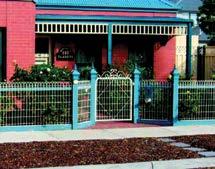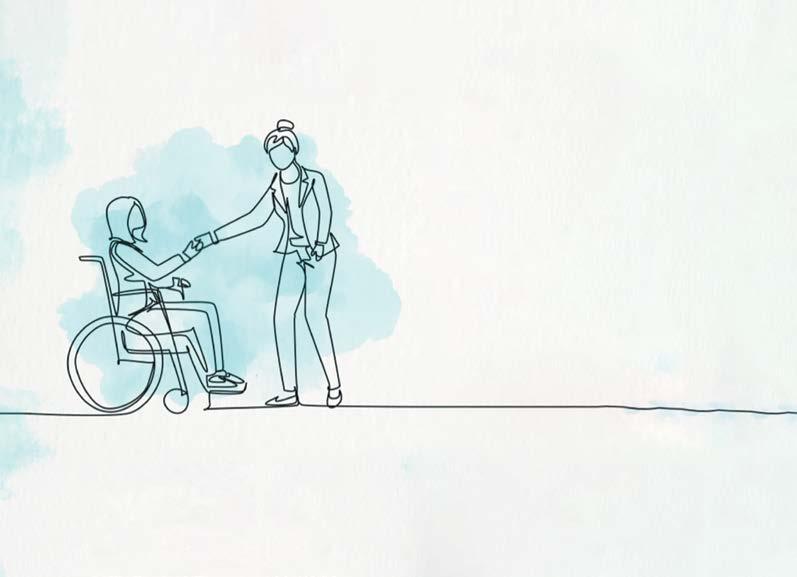
Chart-topping podcaster’s SILLY STORIES
Sunrise weather man SUDDENLY ONE AFTER MAN
Sustainable play boost TOY LIBRARY’S A LIFELINE


Chart-topping podcaster’s SILLY STORIES
Sunrise weather man SUDDENLY ONE AFTER MAN
Sustainable play boost TOY LIBRARY’S A LIFELINE
IF the return of some sunshine after a long, cold winter doesn’t put a spring in your step, I don’t know what will!
Watching the trees burst back to life and fill with blossoms and new growth feels symbolic - spring is a time of much-needed fresh energy and enthusiasm as the end of the year appears on the horizon.
But as well as looking ahead to the Christmas/New Year rush, spring is a great time to reflect on the year that’s been - a spring clean for your mind, if you will.
We can often wish time away and get caught up focusing on simply putting one foot in front of the other, meeting the next challenge thrown our way.
Geelong West Toy Library: A sustainable way to play
PAGE 3
A Mindful Moment: Are we mindful or mind full?
PAGE 4
Steve Biddulph: Make friends with your ‘wild creature mind’
PAGE 6
Geelong youth shape their hub
PAGE 7
Kids in the Kitchen: Easy tangy probiotic carrots
PAGE 8
Angie’s Catch-up with Terry Condon: Kids are ‘a long-term investment’
PAGES 9-11
Podcaster Sam is far from silly PAGES 12-13
Crossing the Gap: Collaboration bridging the gap
PAGE 14
Support centre for new mums feels like Homb
PAGE 15
It’s valuable to pause for a moment and take stock of what you’ve accomplished not only as a parent, but in your career, friendships, and hobbies.
Did you manage to have dinner with your girlfriends? Or finally finish that garden project? Maybe you aced a work project, or let your hair down at a family celebration.
It’s easy to skim over these little wins when your eyes are always on what’s ahead, or what you haven’t been able to achieve.
Take time, too, to consider how far your little one has come this year - the new skills they’ve mastered, the friendships they’ve made, the adventures you’ve taken together, the times they’ve made you laugh, the times they’ve made you beam with pride.
Fill your cup with these memories and the spring sunshine, take a deep breath, and gear up for the final weeks of the year.
Find us on Instagram or Facebook and let us know what you’ve achieved so far this year.
If you have a story to share or feedback on this edition, hit us up on socials or send us an email. We love to hear from our readers!
Caring for your baby’s oral health
PAGE 6
Facing dental fears
PAGE 16
Smiles boost for students
PAGE 16
Empower your child’s health with Balyang Dental PAGE 17
North Geelong Secondary College: Creative, caring and diverse
PAGE 19
One World for Children: Caring for the environment
PAGE 21
Geelong Baptist College: A vibrant community PAGE 22
Book bags boost reading skills PAGE 23
New focus on phonics PAGE 23
Lauren Munday helps students master their mindset
PAGE 24
Suddenly One: Sam Mac celebrates his first year as a parent
PAGE 25
Mum shares suburb switch success
PAGE 26
Author Amanda Lecaude on helping kids to get things done
PAGE 27
The Baby Food Bible: Mums make starting solids easy to digest PAGE 28
Okie dokie! Try these easy cakes PAGE 28
A Wish for Baby is Caz Goodwin’s wish come true PAGE 29
Turning symptoms into super skills PAGE 30
Discover new book releases for all ages PAGE 30
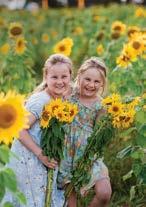


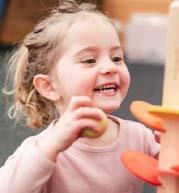

By Casey Neill
GEELONG West Toy Library is rolling out new toys to hundreds of children thanks to a recent grant win.
Children Minister Lizzie Blandthorn announced $445,000 in funding for the first round of Toy Library Grants in March.
“Toys are an essential part of supporting every child’s learning and development,” Ms Blandthorn said.
“Well-chosen toys elp children learn through play.
“This investment will give more children and families access to fun and educational toys and equipment locally and at low cost.”
Geelong West was among 58 not-forprofit toy libraries to receive a one-off grant of up to $10,000 to renew toys and equipment, improve member offerings, and grow membership.
The funding could also be used for one-off costs, such as buying furniture or equipment to improve accessibility, and subsidising membership for families experiencing vulnerability.
Geelong West’s Bridgette Salamy signed up for a volunteering membership two years ago.
“It’s the same toy library that my mother-in-law took my husband and his siblings to when he was a kid,” she said.
“There were even a few Mobilo toys that my brother swears he played with when he was a kid.
“I decided to volunteer in my first ever session, even though I’d never been there before and didn’t know what I was doing.”
She started coordinating within two visits and joined the committee within five months.
Bridgette’s daughters Charlotte, 3, and Eleanor, 4, love going to the toy library.
“Saturday mornings often mean a family outing for us to the toy library,” she said.
“I love it. It’s one of the best things we’ve done as a family.


“Our volunteers can bring the kids while they’re volunteering.
“It’s not an organised playgroup, that’s for sure, but there’s that vibe.
“Parents can come in and choose toys that work for their kids.
“They get to take them home and borrow them for up to four weeks, and get to try before they buy or save themselves from crazy amounts of stuff in their house.
“You can work out if that is just the flavour of the month or something they’re

genuinely going to be repeatedly playing with.”
Two big storerooms are filled to the ceiling with construction and transport to ride-on toys, rollercoasters, water play tables, costumes, puzzles and more.
The toys cater to children aged from about four months to eight years.
“Most kids taper off by the time they get to school,” Bridgette said.
The library has about 194 members, many with multiple children.
“We have a volunteering or a nonvolunteering membership option,” Bridgette said.
“Volunteering means helping with borrowing out the toys and returning them.”
Memberships start from $50 a year.
Single-child membership holders can borrow four toys at a time, and members with two-plus children can take home up to eight toys.
“You can choose if you borrow them for a week or borrow them for four weeks,” Bridgette said.
Bridgette said membership numbers were steady, but she had noticed members borrowing more heavily.
“The amount of toys being borrowed per session definitely has increased,” she said.
“The other day I think we had 40-something members and over 120 toys borrowed in the day.
“Previously we would have had 30 members and more like 80 toys.”
The library used its funding to invest in large ride-on toys, like Cozy Coupe cars, petrol bowsers, lawn mowers, and imaginative play toys like a dentist kit, campfire, and post box.
“I think officially we started in 1985 but records say we started back in 1982.
“There’s been some toys in the cupboard for a very long time.
“We’ve started to retire some of the things that have seen better days.
“Because we’re buying it to be used by numerous kids, we’re buying the higher quality version of the toy.
“Instead of six families buying the cheaper magnetic tiles, we’re buying one set.
Toy libraries offer an alternative to buying toys, help teach children about the lifecycle of toys, provide social and emotional support for families, and connect parents and carers with other community services.
Visit www.toylibraries.org.au to find your local toy library.

I came across this question a few months ago and it really struck a chord. I even gave a chuckle.
The image that comes with ‘mindful’ is a mind clear of everything. It is a mind that is still and concerned only with the here and now. A mind that is quiet and
fully aware of the present moment.
A ‘full’ mind, on the other hand, conjures images of never-ending to-do lists, juggling multiple hats, thoughts of the past and future, and just a whole lot of unnecessary stuff.
So, while I greatly value mindfulness and continue to work hard at it, I can’t help but feel that my mind is more full than clear!
And I have no doubt that in such a demanding and high-pressure society, most of us are the same.
This also had me thinking about our children and what effect our fast-paced society is having on them and their wellbeing.
With jam-packed schedules - from


sporting commitments to learning a musical instrument, to socialising with their peers, to homework - the busyness of life appears to be as never-ending for them as it is for us!
As a primary school teacher with more than 10 years of experience, I have seen firsthand the impact this busyness has on children’s emotional wellbeing, both inside and outside the classroom.
Of course, children need to play sport, learn a musical instrument, socialise, and do their homework (I am a primary school teacher after all!), but has the opportunity for children to ‘just be’ been lost?
Are we focusing too much on outcomes, on ticking things off the list, and not allowing children to just be in
the present moment?
So perhaps, in the midst of ticking off our to-do list, let’s all try and find some time in the day to be mindful and notice what we hear, feel, smell, touch, and taste, and our minds - even for just a brief moment - might be slightly less full.
Fiona is an experienced primary school teacher with a passion for student wellbeing.
She runs mindfulness programs for primary school-aged children, including school incursions, after-school sessions, and school holiday programs.
Each session is designed to equip children with a toolkit of mindfulness strategies to help them lead healthier and happier lives.






AN early parenting centre is helping new parents across the Geelong region to access specialised support.
The Barwon EPC officially opened at the McKellar Centre in North Geelong in June.
“No two journeys towards motherhood and raising children are the same and it’s so important to have a different approach for every individual person,” Lara MP Ella George said.
“Strengthening the parent-child relationship, helping parents with their goals, and supporting children in those crucial first few years is incredibly important.
“These centres deliver flexible, targeted services that aim to enhance the parent-child relationship and support parents with strategies for achieving their parenting goals.”
Sleep and settling are among the biggest challenges new parents face, with about half of the Victorian parents who use EPCs reporting problems with their child’s sleep.
This can not only lead to post-natal depression, isolation, and stress for parents but can also affect a child’s behavioural, mental, and physical development.
The EPC’s multidisciplinary team includes registered nurses, registered midwives, maternal and child health qualified nurses, enrolled nurses, psychologists/psychiatrists, play therapists, early parenting practitioners, and social workers.
The centre will also strengthen partnerships and referral pathways with key local support services for Aboriginal

maternal and child health, Aboriginal community-controlled organisations, mental health, LGBTIQ family support, disability, and family violence.
Families can access the Barwon EPC through self-referral directly via Barwon Health or through a general practitioner or maternal and child health nurse referral.
The new centre has started triaging families who require early parenting support, and day-stay programs and overnight stays have started.
“Entering parenthood is a wonderful time in someone’s life, but it can also be stressful and difficult too,” Health Infrastructure Minister Mary-Anne Thomas said.
The Barwon EPC has 10 residential family units and four day-stay spaces to ensure families of all sizes can access short-term and week-long support.
“This EPC will enable families to access critical early parenting services closer to home without the need to travel to Melbourne,” Ms George said.
“It will support families across its broad catchment, which includes local government areas across western Victoria from right here in Geelong, stretching out to Warrnambool.
“Health and well-being of parents, carers and the whole family is vital to the child’s developmental outcomes, and this will ensure that babies and toddlers can thrive during their early years.”
Ms George said the State Government had invested $148 million to expand the early parenting service network.
Barwon was the eighth EPC to open, with another four to follow.



Do you know the single biggest enemy of families every single day?
It’s not just a mailbox full of bills, or climate change, though it is certainly tangled up with those. STEVE BIDDULPH
IT is anxiety.
The horrible feeling that grips your insides, keeps you awake at night, and steals your happiness if you aren’t careful.
And who among us hasn’t had a kiddie anxious about going to school, or having unexplained tummy aches, waking with nightmares, or unable to fall asleep in the first place?
Anxiety is what makes some people (often men) fly off the handle, or be controlling. It makes us shout at our children when we don’t want to.
It is public enemy number one.
I was so concerned at the amount of anxiety in kids around the world that I have just spent three years searching for a powerful answer - and I think I have found it.
Some of the best neuroscientists in the world have discovered something quite amazing, and I have been working to put it in simple language.
So here it goes…
We have two minds!
Yes, you read that right.
We have our regular mind, which prattles on, gets defensive, goes in circles. This mind is still really great - for planning your shopping list, doing your tax, building bridges and hospitals. But it gets out of control so easily, and it keeps you awake at night or too distracted to enjoy or love your children.
But we also have - in the right side of our heads - a silent wild animal mind, which is super perceptive, amazing at reading faces and knowing who to trust, and holds all our memories, even the ones we can’t consciously remember.
This side of your mind knows where you left your keys! It knows what all animals know - leave tomorrow to tomorrow, enjoy the moment, love your life. And usually a growl is all it takes to get the cubs in line!
But this side has no words, so it talks to you in the way that all animals from the dawn of time have, with signals to your body!
You can test this - think of one of your children and notice what happens inside you when you do. Down in your torso, little stirrings or tightenings or softenings or swirls happen. If you think of another of your children (or your parents, or anyone really) then a different set of sensations happen. These are fresh and changing.
This is your ‘wild creature mind’ giving you an update. If you listen to those signals, they always have something to
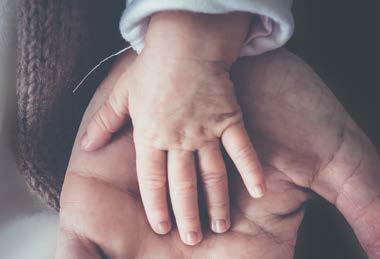
tell you. Often, it is just ‘let your shoulders drop from around your ears, breathe deeply, and know that you are loved’ (even just by an old psychologist writing for you from down in Tasmania).
So, how does it work?
If you are feeling anxious (or you want to help one of your children), then try this. Instead of saying ‘I am anxious’ (or angry, or any unpleasant feeling) say instead, ‘Something in me is anxious’. Notice that this has a different feeling! It kind of gives you some spaciousness and room to move. It’s not ALL of you, it’s just something going on down there, which you can look at kindly.
Then go down in your body and see where that feeling lives. What are the exact sensations, and how would you describe them if you were telling a friend?
As you do this, notice that the sensations begin to change. They either melt away and you don’t feel as bad, or they begin to alter or even move somewhere else. Perhaps you might feel a tear in your eye, or a little shudder. This is the feeling moving out of you. Perhaps you might feel strong and stirred up to do something.
Your ‘wild creature mind’ is like a panther walking alongside you, fierce and strong; or like a soft little kitten needing to be soothed and settled. You will know which it is.
Children can be helped by sitting
with them and asking ‘Where is it in your body?’, ‘What is it like?’, ‘Does it have a colour?’ or the best question, ‘What is it wanting to say to you?’.
When you are listening to your body signals, you shift to the right hemisphere of your brain - the one that does not prattle or rush, but connects deeply with those around you. And if your child listens to their body, they feel loved and safe when they are with you at these times. It is the job of us parents to be less anxious than our children, so they can reregulate their nervous system. They just feel better and calmer around us and then, gradually, out into the world.
There are sometimes real things to be stirred up about, and our wild animal side knows which they are and gives us the warning signs plus the energy to act on them.
With both sides of our brain working as a team we can be both sensible and wise; fierce when we need to be, and calm when we don’t.
It is a fantastic thing to be able to transform anxiety using these simple skills.
Wild creature mind is in bookshops from 27 August.
You can follow Steve’s posts and videos on some of these methods on his Raising Boys and Raising Girls Facebook pages, or at www.wildcreaturemind.com.
THE focus with new babies is often on breastfeeding, developmental milestones, and sleep, with new parents left in the dark about dental care for their bub.
So the Australian Dental Association (ADA) is reminding Australian parents of the oral hygiene basics for children: brush twice a day, floss daily, eat a diet low in sugar, and see your dentist regularly.
This might seem obvious, but the stats surrounding children’s oral health are alarming: 34 percent of kids aged 5 to 6 years have had decay in their baby teeth; 70 percent of kids aged 9 to 13 consume too much sugar; and 27 percent of children aged 5 to 10 have untreated tooth decay.
The ADA says a lack of infant oral healthcare information might contribute to these stats, so what are the oral healthcare basics for babies and toddlers?
Before babies get their teeth, parents can wipe their baby’s gums with a clean, damp muslin cloth.
Once the first tooth arrives, they can use a soft-bristled toothbrush and water to brush.
“Toothpaste doesn’t need to be introduced until 18 months unless otherwise advised by your dentist,” ADA oral health promoter and dentist Dr Mikaela Chinotti said.
“At this age, start using a children’s toothpaste that includes fluoride, an important ingredient that helps to strengthen and protect the teeth from tooth decay.
“After brushing, your child should spit out the toothpaste foam, but they don’t need to rinse their mouth with water.
“Children are likely to swallow more toothpaste by rinsing than by just spitting.
“This also leaves a layer of fluoride toothpaste on the teeth, exposing them to the benefits of fluoride for longer.”
For parents finding the whole brushing routine fraught, there are
numerous phone apps with songs to help engage your little one and to help them brush for the recommended two minutes.
Alternatively, play a song your child likes for a two-minute period.
Two minutes of brushing is not yet needed for babies with only a few teeth.
In addition to brushing, flossing is recommended from when your baby has two teeth that touch side by side, which is often around age 2.
Your dentist can show you how to floss your child’s mouth and what to use. Flossettes are great options for little mouths.
The ADA says night-time drinks are an area of confusion for some parents.
The body makes less saliva during sleep, so a bedtime bottle of formula or milk may be left on the teeth longer.
If this occurs repeatedly, it can cause tooth decay.
So if you give your baby - aged over 6 months - or toddler a bottle in bed, only put water in the bottle. Never give juice or soda.
Your baby’s first dental visit should ideally be when their first tooth arrives in the mouth.
It’s best that their first visit is not due to tooth pain, as this may cause anxiety around future dental visits.
For the first few dental appointments, some parents find putting their little one on their lap the most comfortable and calming solution for everyone.
At these early dental appointments, the dentist will look in your child’s mouth to examine the teeth and give you advice on oral hygiene techniques, tooth eruption, habits, and diet.
For more information on this and other oral health topics, visit teeth.org.au. There are pro-tip videos on caring for your infant’s oral health and teething babies.

CONSTRUCTION is about to start on a new youth hub in central Geelong.
The City of Greater Geelong will open the centre in the Busport building on the corner of Gheringhap Street and Transit Place in January next year.
The two-year pilot program is supported by $400,000 from the State Government.
More than 1220 people contributed their ideas about how the hub should look and what services and spaces it should offer, including 1121 young people aged between 12 and 25.
Based on these contributions, the hub will feature:
■ an open plan area for socialising and group activities, which could also be set up with spaces for gaming and quiet time;
■ a multi-purpose room suitable for a range of creative uses such as music and art;
■ a kitchen, able to host cooking classes; and
■ an accessible bathroom.

The look and feel of the interior will match the most popular descriptions from survey respondents, which included welcoming, comfortable, warm, colourful, and casual.
Input gathered during the engagement process will also influence how the hub is used.
Feedback suggested young people most wanted the facility to feature opportunities to learn or practice skills - such as cooking, art, and music - as

well as mental health support, social ‘drop-in’ sessions, and employment assistance. The city’s 2022 and 2023 Youth Councils both strongly advocated for a youth hub in Geelong and played central roles in progressing the project, while the 2024 group has been active in the design process.
“Young people have asked for this facility and from the outset we wanted to make it a place that they would want to come to,” Mayor Trent Sullivan said.
“This process has been incredibly valuable in helping to identify exactly what will make the youth hub a success, and how it can provide the most value to young people.”
Cr Sullivan even asked the community to help name the hub.
“We want a catchy name that will give the hub an identity and help attract people through the doors,” he said.
Submissions closed at the end of July. The youth development team will review them against the principles of simple, relevant, memorable, meaningful, and respectful, and present a shortlist to the Youth Council advisory committee.
To help the design process, the city’s youth development team also visited youth hubs in Richmond, Fitzroy, and Footscray, and engaged with staff from multiple youth service organisations.
Construction was expected to begin in September.
Find project updates at yoursay. geelongaustralia.com.au/YouthHub.

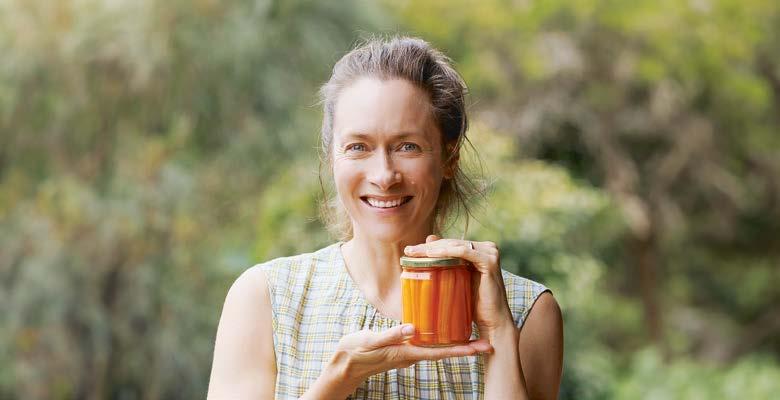
THESE easy tangy probiotic carrots are a simple way to get fermented or cultured foods into our kids.

Fermented foods are rich in probiotics that encourage beneficial bacteria to flourish in their guts, improving digestive health, immune function, and mood.
They’re also a fun way to get the kids in the kitchen, learn a little bit of science, and explore their senses.
Using just two ingredients, they’re made by immersing carrots in a brine (salt and water solution).
The salt kills the bad bacteria, leaving the good bacteria to convert sugars into lactic acid, which creates a safe environment and preserves the carrots.

Unlike pickling, which kills bacteria, ferments have a more distinct tangy flavour.
My son used to call these ‘fizzy carrots’ when he was little because the carbon dioxide generated during the
fermentation process can produce a tickling sensation on your tongue – now we’re making vegetables fun too!
Chop them up and add to salads, use them to scoop up hummus or guacamole, or just eat them raw.
Well Fed Kitchen is a range of healthy snacks for kids that you can make at home.
Created by Nutritionist and mum, Lucy Stewart, they’re made with only real wholefood and plant-based ingredients – no additives, nothing artificial, and without nuts, dairy, soy and wheat.
Well Fed Kitchen provides an easy snack alternative to the sugar-laden, healthy pro- cessed options, guaranteed to fill kids tummies, satisfy their hunger, provide a steady release of energy and some essential growing nutrients too.
www.wellfedkitchen.com.au @wellfedkitchen_snacks


Ingredients:
■ 1 tsp sea salt
■ 500g carrots
■ Filtered water
Instructions:
1. Trim the carrots, rinse and peel if not organic. Slice into thin sticks about the same size and thickness.
2. Add salt to your jar along with carrots - it’s easier to stack your carrot sticks with the jar laying on its side - and cover with filtered water.
3. Cover the jar loosely with a lid and place on a small plate to catch the overflow that may happen during fermentation.
4. Leave the jar at room temperature for 24 to 48 hours – slightly longer in the cooler months. Once you start to smell the sourness and see bubbles forming, they’re ready to eat!
5. Transfer to the fridge and store for up to one month.

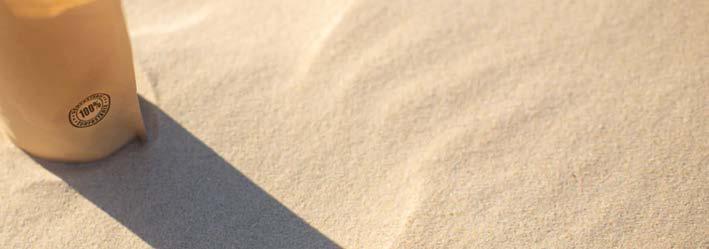
12562706-MS36-22
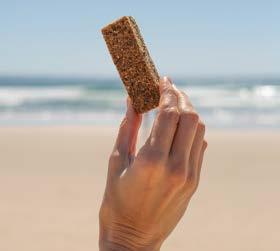
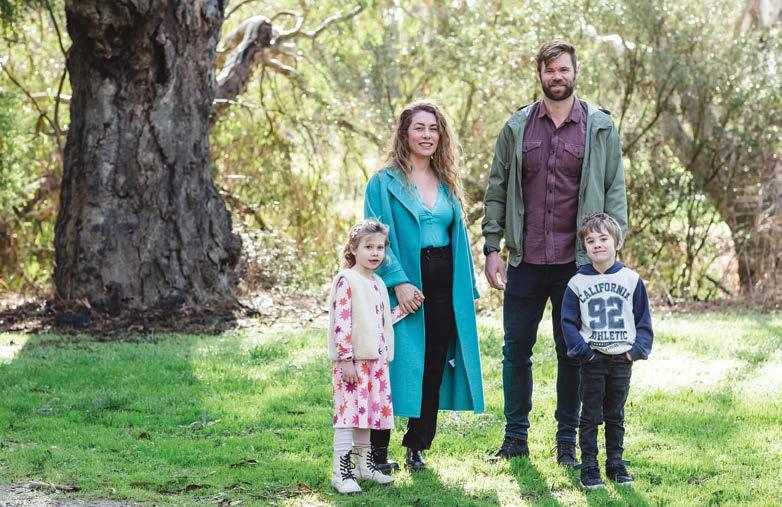
A 39-year-old father of twins, Terry Condon stepped into our lives recently as if in answer to our prayers.
A friend mentioned she had worked with a money coach from The Cashflow Co.
I didn’t even know a money coach was a thing but I loved the sound of it.
When it comes to finances, my preferred method has mostly been the ‘head in the sand’ approach which, surprisingly, hasn’t been serving me.
Since I’ve shacked up with my soon-to-be husband, Will, I noted that he, too, loves that same approach…hence my light bulb moment of ‘Holy heck! We NEED a money coach!’.
Long story short, Terry and business partner Ryan Monaghan made the terrifying prospect of looking at our finances actually seem fun and way easier than we imagined.
It’s been a total game-changer.
Getting to know Terry over this time, I could see he has an absolute calling and burning desire to help people grow and change, and not just financially.
I discovered this desire came from seeing his own mother change overnight…though not for the better.
His past career had him working as the youngest performance coach in the AFL and with Australian Rugby and the Wallabies.
He also hosts a successful podcast called Wealth, Time, Freedom (WTF) that gives you a real sense of the boy’s authenticity and depth of knowledge.
When it comes to home life, I love the sound of how he applies his coaching
skills to his parenting as well.
Married to an equally intriguing, clever, holistic therapist Elise, the two make some pretty dynamic parents.
Can you give a snapshot of your life before kids - childhood, school life, ambitions?
Before kids I had a career in sports.
I spent 10 years working with elite teams, learning about people and how goals and habits are built.
I moved around a lot - Melbourne, Sydney, and eventually Geelong.
I grew up on a farm in the Riverina, New South Wales, which taught me discipline through long hours of monotonous work.
I went to boarding school and had a mixed childhood of beach and farm life.
Initially, I wanted to join the army, but soon realised I didn’t like others’ rules.
My ambition was always to work in sports, which I achieved, but deep down I aspired to run my own business, inspired by my self-employed farmer dad.
How did you meet your wonderful wife Elise, and what makes your relationship special?
I met Elise when she was a Pilates teacher and I worked in sports.
I was exploring alternative rehabilitation methods for athletes, and Pilates was unique at the time. We met at her Pilates studio in St Kilda and our relationship grew from there.
She was transitioning into counseling and healing and I was drawn to her worldview.
We built a friendship that eventually turned into a relationship.
Our connection was special because it was built on mutual respect and curiosity about each other’s perspectives.
Were you present at the birth of your babies, and how was that experience?
One hundred percent, I was!
While it was such a powerful experience, it was also terrifying.
Elise faced complications, and there was a time when we actually feared for her life.
Fortunately, she pulled through.
Bringing the babies home was one of the most precious moments - driving home from the hospital was the slowest I’ve ever driven, knowing I was carrying such precious cargo.
What did your career look like before starting The Cashflow Co?
I started in sports, volunteering and interning for three or four years to learn the craft.
By age 23, I was a full-time performance coach for the Richmond Footy Club, likely the youngest at that level in Australia.
I learned that trust and belief from others mattered more than knowledge. I studied successful coaches, like John Wooden, to understand what made them different.
After Richmond, I worked with Australian rugby, the Wallabies, and also the Olympic sevens teams, which was a valuable experience.
As I progressed, I pursued business education, knowing I’d eventually leave sports.

I worked for the Geelong Cats, where a restructure demoted me despite my experience.
This sparked my interest in personal finance, as I realised I didn’t want to be financially dependent on decisions out of my control.
I got obsessed with learning about finance and investing.
That’s how I met Ryan, and we co-founded The Cashflow Co.
Our mission is to help young people and couples take control of their finances, build meaningful lives, and maximise their return on time and life.
Our philosophy is that time is the scarce asset, and money is the tool to maximise it.
Our business educates people to build skills and habits for financial freedom and success.
How would you describe your parenting style?
Clown! Elise would say I get to do all the fun stuff and she has to do all the serious stuff.
My parenting style is not laissez-faire, but I do let my kids work things out for themselves.
And I try to help them make smart decisions, not to force my decisions on them.
So, you can make this choice, but let’s have a think about what happens after that.
I guess I’m sort of consultative coaching, in that sense, when it comes to parenting.
And I definitely parent my kids differently because they’re different people.
Smith needs a different version of me than India needs.
I try to adapt my style to the child and what they’re wanting and needing at the time.
But I also just like having fun with these guys.
They bring me back to my own childhood and I like reveling in those moments.
Was there anything you learned from your parents that you use in your parenting?
From my dad I learned how to give kids responsibility and trust them with things to help them develop a sense of selfconfidence and agency.
He also taught me how to support people through challenging times.
My mum showed me how important it is to think for yourself and accept life’s challenges.
She also showed me how to have conviction in what you’re doing.
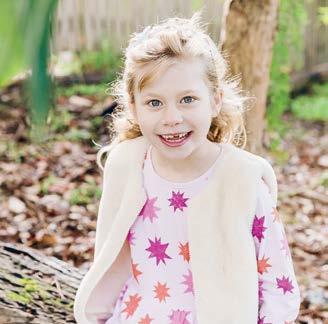
These are things I try to instill in my kids every day.
What do you find to be the hardest thing about parenting?
I love personal development and I just don’t think there’s anything as close to the kind of growth that you get as a parent.

Primarily, it’s because you’re dealing with a lot of different challenges and in contexts that you probably aren’t always prepared for.
You have to be watching yourself a lot, and you can see yourself at your worst, and you can see yourself at your best, and you can see yourself in your kids… it’s just a big mirror.


I really do love what I do in the sense of coaching and helping people improve and I think the hardest thing is that you can get really addicted to the short-term changes you can make in business and career and improving yourself and getting better in that space.
You can actually get very addicted to that because the feedback loop can be pretty short.
But the return on time invested in my kids, I probably won’t really see that come to fruition until they’re about 20. That’s when I’ll see whether I invested enough time with them then.
So the hardest thing for me about parenting is to make that balance and make sure that I am doing the right kind of investing with them, i.e. emotionally, financially, and just spending enough
time with them to have those strong relationships as we go.
I don’t think I always get it right. It’s the question that’s always on my mind. Am I getting it right?
If you could give people one crucial finance tip, what would that be?
You’re never going to feel comfortable taking control of and responsibility for your financial decisions until you define what your money is for.
It needs to be an expression of your values because wealth is essentially having more of what you value. And money is just the way we measure and move value.
They’re not the same thing - you need to be able to separate those two things apart.
Define wealth for yourself so that you can make financial decisions that move you closer to that state, that experience, that expression of who you are and the way you want to live.
So my one tip would be, before you dive into the spreadsheet, actually craft a vision for yourself and for your life, because you only get one life, and the job of money is to help you maximise that life!

Fast facts
Name: Terry Condon
Age: 39
Occupation: Self-employed, director and founder of The Cashflow Co.
Wife: Elise. Holistic healer extraordinaire, trauma therapist. Very holistic and spiritual.
Children: Six-year-old twins, Smith and India.
Three words to describe your family members: Smith is a happy, smiley, blur. India is a thoughtful, helpful, friend. Elise is beautiful, intelligent, and thoughtful.
Most annoying habit: (Laughs) I’ve got a lot of quirky or annoying habits. I think Elise would say forgetting to put the bins out.

Go-to karaoke song: Your Love by The Outfield, an ’80s rock song the kids and I love singing while we’re whiteboarding.
Favorite movie: The Terminal starring Tom Hanks.
Most embarrassing moment: As a kid, I rolled backward down a fishing ramp after trying to take off my wet pants. My dad still laughs about it.
Mantra: ‘Think for yourself.’ Don’t let others dictate your thoughts; you know yourself best.
Favorite quote: Lyrics from Chris Stapleton’s Starting Over - “Nobody wins afraid of losing. The hard roads are the ones worth choosing.” Superpower you’d like to have: The ability to bestow superpowers on others.
What scares you: Regret; not living a life true to myself and squandering the greatest gift I have.
Life-changing moment: When I was seven, my mum changed drastically, prompting my lifelong question, “How and why do people change, and how can we ensure it’s for the better?”
Three people for Sunday roast (living or passed): John Wooden - The winningest coach in NCAA history; he understood how to get the best out of people. Lao TzuAuthor of Tao Te Ching; I would love to learn from his wisdom. Paul Graham - Founder of Y Combinator and writer of the essay ‘How to Do Great Work’, which I frequently revisit.
Your parenting wisdom: You have to be watching yourself a lot, and you can see yourself at your worst, and you can see yourself at your best, and you can see yourself in your kids…it’s just a big mirror.


By Casey Neill
NOW, do you know what will happen to Sam Ramsden on his Silly Stories podcast adventure?
Neither does Sam. There’s only one way to find out…
The Kilsyth electrician and father of four girls - Zahli, 9 months, Brinley, 3, Aubree, 5, and Holly, 7 - entered the podcast scene late last year.
By May, Silly Stories for Kids was topping the worldwide charts.
“It wasn’t my idea. I didn’t even conceptualise it or anything,” he told Kids, clearly still bewildered by his sudden success.
“When Holly, our oldest, was 2 and transitioning from a cot to her own bed, I used to just lay on the floor and started making up stories.”
Fast forward four years, and his father-in-law, Russell Dixon, pitched Sam an idea.
“He said ‘I’ve listened to you tell these stories for a long time now, I think you should turn it into a podcast’,” Sam said.
Russell said he’d been researching the medium for months and wanted to back the project.
“I literally just thought ‘I’ll make a little catalog of stories for my kids to show their kids one day, maybe a few friends will listen to it’,” Sam said.
He and Russell held weekly meetings and learned the ropes of podcasting.
They settled on a name - searchable, catchy - and a logo, and Sam selected a release date…which fell two and a half weeks after his fourth child was born.
“I was just too excited, I didn’t want to keep waiting,” he laughed.
“The first place I started recording was literally a supply cupboard at church.
“I taped blankets up, put up LED lighting.”
He upgraded to a recording studio he built in his back yard using a photo booth he’d bought on Facebook Marketplace.
Then an electrical job for missionary organisation Reach Beyond led to an offer to use its professional broadcast setup.
Each Silly Stories episode begins with, ‘Do you know what’s going to happen in today’s adventure? Me either.’
“That’s genuine,” Sam said.
Listeners send their names to Sam, who embeds them in a wacky story he makes up on the spot.
“I write their name on the tablet in front of me. I might start with a word or a place or the tiniest piece of an idea, and then I’ll press record,” he said.
“I love being creative. I love thinking outside the box.
“Telling stories and being silly is the most authentic version of me there is.
“My brain is exciting, to put it politely.
“When we go on a drive, me and the girls, they’ll often request a character.
“I’ll be driving as (Silly Stories favourite) Pim Pim, making jokes about seeing people on the side of the road.
“We’ll take wrong turns and things.
“To still try and be the fun and the joy in your own family, that’s what my dad did for us.
“I wanted to do that too.”
Sam explained that he has ADHD.
“So much of what I do day-to-day is trying to keep my brain on task,” he said.
“Telling stories is just sitting down, pressing record, and enjoying where my brain goes and really just having fun with it.”
Fans can rest assured that Sam’s story supply is endless.
“I’ve been doing it for five years,” he said.
“There’s never been a time I’ve sat down to tell a story and something hasn’t come out.
“I can’t actually explain how this works.
“If I tell a story, it’s almost like I’m experiencing it like the kids are.
“It flows that quickly.
“When I’m editing it, it’s like listening to it for the first time.”
His life experiences often bleed into the stories, like a story about a girl entering Food Land through an oven that emerged after Sam installed a large oven at work.
“I’m learning that the way I tell stories is fun and I think so many things are dark at the moment and so many things are so complicated,” he said.
“I think there’s a real desire amongst parents to just really help their kids have fun.”
Parents tell him they put on a Silly Stories episode when “everything is really hard”. It gives their kids a few minutes of fun and gives them a chance to reset.
Parents of children on the autism spectrum regularly tell Sam that his stories help their kids to regulate.
“My real hope is that this podcast can strengthen family relationships,” he said.
Sam’s also a church youth group leader.

“I’ve been doing that since I was 17,” he said.
“So much of what I get to do there is just be silly, be fun.”
But doesn’t he ever feel self-conscious about being silly as a grown-up? Nope.
“I think I’ve just had so much opportunity in my life to be that silly, and to be that silly in front of lots of people,” he said.
“My dad was in a band when we were little. They did fun, silly, stupid things.
“I saw people in front of large groups being silly, and people loving it.”
And doing youth ministry reinforced this.
“I’m used to being the dad in a group of dads who is mucking around and doing stupid stuff,” he said.
“I think those kinds of nerves come from putting what other people see of you higher than what should be higher - the joy and the fun and bringing some good to people’s lives is the most important thing.
“If someone thinks I’m weird or strange, I’m OK with that.
“I don’t find self-worth in what other people think.
“I’m created by God, this is what he’s created me to be.
“I love that I’m different.
“We actually need different people to be able to meet the needs of different people.
“You need diversity, you need different people with different ways of thinking.”
Sam never planned to start an electrical business.
“I literally said through my apprenticeship that you’d never find me running my own business,” he laughed.
But the company he was working for liquidated just before he was due to marry wife Olivia, who was then studying full time.
Sam had to find more work, and was soon eating his words and working for himself.
“My business journey has been terrible,” he said with his trademark broad smile, which reaches his eyes and never seems to leave his face.
“I wouldn’t be half the person that I am now if not for all the trials and troubles.”
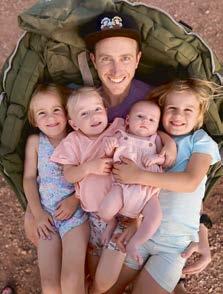
Olivia is now on maternity leave from her role as a physiotherapist in the Austin Hospital ICU.
“She’s gifted in that kind of stuff,” Sam said, his pride obvious.
“In crazy situations, she’s comfortable and logical.
“I am incredibly blessed with the wife that I have.
“She is so supportive and encouraging of me.
“She’s my biggest supporter.
“We manage the chaos of life together.
“I wouldn’t be able to do any of this on my own.”
Sam and his family were invited onto the field with the Melbourne Football Club cheer squad a few weeks before our chat, after Sam mentioned the club in one of his stories.
“That’s mind-blowing, to think that some idiot sitting in a cupboard talking to himself could lead to these kinds of experiences,” he said.
It was the girls’ first AFL match so the bar was set high - Aubree asked if they’d get to go onto the court if they went to a netball match.
“I was trying to communicate to our kids how abnormal that experience was,” he laughed, shaking his head in disbelief.
Sam’s made connections with other podcasters, who’ve been generous with advice, and now has a manager - “which sounds ridiculous to say” - after performing an electrical safety check at his home.
He is also now working with children’s audio player company Yoto.
“We’re the kids’ podcast they’re partnering with in Australia,” he said.
Silly Stories is mentioned in the company’s press release alongside the likes of Roald Dahl, Sir Paul McCartney, Zoe Foster Blake, and Emma Memma.
“I never would have imagined this stuff in a million years,” Sam said.
“I’m just excited to see where it does go.
“I’m quite the pessimist when it comes to myself.
“There was no glimmer of a thought in my head that it would progress past my family and friends.
“I would love to be known in houses around the world and have a really positive effect, and generate income for my family.
“I’ve got no idea where it could go.”
IN the healthcare landscape, collaboration stands as a cornerstone for achieving remarkable outcomes.
When professionals unite their expertise and resources, they can accomplish far more than they ever could alone.
This fundamental principle is at the core of the dynamic partnership between Crossing The Gap and Barwon Occupational Therapy (OT).
These two esteemed organisations have joined forces to provide comprehensive support and services to their community, with a particular focus on mental health, paediatrics, senior health, and the disability sector.
Kristy from Crossing The Gap provides her insight on the partnership.
“We support each other, promoting each other’s businesses,” she said.
“We found that by working together, we can go a lot further.
“I have had the privilege of working closely with Anna, the director of Barwon OT, for a good seven years.
“I first met Anna when working for another organisation; she not only trained my staff but continues to provide invaluable training to my team today.
“When I ventured out on my own, Anna and Gwen helped me establish my company and have stood by my side every day since.”
Barwon OT Barwon OT is renowned for its diverse team of passionate allied health professionals dedicated to making a difference in the lives of their clients and communities.
They strongly believe in matching participants with the right OT, social worker, psychologist, or therapy assistant to ensure personalised and effective care.

Furthermore, Barwon OT offers its clients the option to complete appointments in their comfortable consulting rooms, to attend group of staff training in its multipurpose training hub, or to trial equipment in the impressive sensory gym, providing a range of versatile environments for therapy and development.
The option to complete appointments in the clinic provides participants with important cost savings options for therapist time and travel.
One of the standout features of Barwon OT is its provision of behaviour support, led by experienced allied health professionals.
This aspect of their services underscores their commitment to holistic care, addressing not only the physical but also the behavioural and emotional well-being of their clients, carers, and communities.
Barwon OT offers flexible treatment options, working collaboratively with families, carers, and other health professionals.
Its advanced practice areas, such as sensory modulation, highlight its commitment to remaining at the forefront of the field.
To learn more about Barwon OT and its incredible services, visit www.barwonoccupationaltherapy.com or call 5200 2684.
Crossing The Gap
Crossing The Gap is a beacon of educational excellence, dedicated to empowering students with diverse learning needs.
Its specialisation in supporting students with Specific Learning Differences (SLD) is underscored by a strong emphasis on school readiness.
What sets Crossing The Gap apart is its unwavering commitment to working alongside Allied Health professionals.
This approach ensures that each student receives personalised attention, tailored to their unique learning style, fostering a supportive and inclusive environment.
Collaboration is at the heart of Crossing The Gap’s ethos.
It prioritises partnerships with parents, carers, and schoolteachers, recognising that a united front leads to the best outcomes for students.
This collaborative approach extends beyond the classroom, with resources available to support students’ learning at home and at school.
Crossing The Gap ensures that each child has access to the tools and support they need to succeed, empowering them to reach their full potential.
To learn more about Crossing The Gap and its transformative approach to education, visit www.ctgdisability.com. au or call Kristy today on 0493 057 276.
Crossing The Gap and Barwon OT share a vision of empowering individuals and families to reach their full potential.
By pooling their expertise and resources, they have created a robust network of support that extends across the Barwon region, covering areas like Geelong, Golden Plains, Colac, Surf Coast, Bellarine Peninsula, and more. The partnership between Crossing The Gap and Barwon OT epitomises the power of collaboration in healthcare. Together, they are bridging gaps and providing holistic, client-centered care to their community. Their shared values of compassion, professionalism, and innovation make them a formidable team, dedicated to making a positive impact in the lives of those they serve.
This collaboration serves as a shining example of what can be achieved when professionals work together towards a common goal.


By Casey Neill
HOMB nurtures and empowers new mothers, striving to prevent postnatal depression and anxiety.
Founder Larissa Leone is also working to change the ubiquitous baby-first narrative and make mums the priority.
Speaking to Kids, Larissa pointed to baby expos as an example.
“There’s no postpartum stands,” she said.
“Everything is for the baby. Everything is still for the baby.
“All they want is your love and your attention. Spend your money on yourself being able to provide that wholeheartedly.
“It’s really difficult to convey that knowledge and information because (pregnant) women don’t want to know. They are focused on the fluffy stuff.
“The system or society doesn’t value that. What it now seems is indulgent.
“Homb has been referred to as a postpartum hotel.
“For the most part, sure, that’s what it is. But it sounds so transactional.
“There’s so much more depth to what we offer and what we provide.
“This is a solution.
“The healthcare system has to get on board.
“The spend on the recovery and the response to postnatal depression is huge compared to the spend on preventative care.
“We’ve got stats staring us in the face, on postnatal depression and anxiety. One in five.
“We seemingly have all of this help but the stats are still increasing.
“Is it that we’re talking about it more and women are coming forward more, or is it that the money raised isn’t going to the right areas?”
Homb was born from Larissa’s experience after welcoming her first child.

“I had a very successful business, I had all my ducks in a row, I was very in control of everything in my life,” she said.
“I had a great pregnancy, no complications. Even my birth was great, there was nothing overly stressful or traumatic about that.
“But from that first moment, I just felt very out of control and very ‘this person now is relying on me and I don’t know if I can do this, am I going to do this well enough?’.
“There was already a lot of selfjudgement.
“I was reading every book that I could possibly get my hands on to tell me how it was all going to work out.
“When it didn’t, it really catapulted me into a world of anxiety and really deep worry.
“It just continued to spiral, the more I tried to cover all those feelings up and tried to integrate into society.”
She reached out to her husband for help when her daughter was about six months old.
“I was having very dark thoughts. I was thinking about self-harm,” she said.
“I thought ‘if I hurt myself enough but not too much then I can go to hospital and have a couple of nights where I’m not with the baby and I can have some sleep and some rest’.
“I knew somewhere in me that that wasn’t normal.”
They contacted a mothercraft nurse - who cares for newborns and provides advice and training to parents - and waited four weeks to see her.
“At that point it was still not help for me, it was help for the situation,” Larissa said.
“With the benefit of hindsight, I should have been straight to a psychologist.
“It’s interesting that the go-to was still not caring for me as the mother.
“I said to my husband, ‘why is there nowhere that I can go that I can be helped through this without it being a hospital?’.
“I was just astounded that there was nowhere I could go that was a more homely environment.”
Larissa was retrospectively diagnosed with postpartum depression after having her son two years later, and her desire to affect change intensified.
“I just didn’t want any other woman to experience what I had experienced,” she said.
“The health care system has pulled us away from our innate knowing of how to birth.
“Largely I think we’ve overmedicalised something that is innately natural.
“It’s just become a huge marketing thing and women don’t trust themselves anymore.
“The essence of Homb is really trying to bring back that confidence and trust within a woman to have the confidence to make those decisions for herself, with the guidance and support of people who are intrinsically involved in maternal health.”
Homb’s team includes registered nurses, midwives, lactation consultants, naturopaths, nutritionists, doulas, birth trauma practitioners, gentle sleep consultants, and more.
“We are mother-led,” Larissa said.
“If a mother has a way she wants to do things we follow that.”
Women who need support have the opportunity to access the service at low or no cost.
“Starting the charity arm was a huge part of it for me, because I understood the costs - having midwives and incredible staff doesn’t come cheaply,” Larissa said.
“I knew it was not accessible for the majority of women.”
The feedback has surpassed her expectations.
“It’s been quite extraordinary and certainly the most fulfilling thing I will ever do in my lifetime,” she said.
“Just to know we’re affecting change and helping women is certainly enough for me.
“Consistently, they feel like they can breathe again.”
FEAR of the dentist in children needs to be addressed early or it could continue into adulthood, according to the Australian Dental Association (ADA).
Children learn to be anxious by experience – through a traumatic event or vicariously from their parents, with the parent’s own dental fears being learned by the child.
That’s why first dental visits for a toothache requiring emergency treatment can be traumatising, causing the child to be dentally anxious – and also why dentists always recommend bringing children for their first visit once their first tooth appears, so they get used to the experience, the sight of the dentist, the smells and the sounds.
Setting up the first dental visit as a fun and exciting thing establishes early trust and rapport.
For the first dental visit, parents are encouraged to put the child baby/toddler on their lap and cuddle them to help them feel more safe and secure. How to help the anxious child:
■ Parents can talk with their child about the dentist at home, and role play can be a great way to help children understand what the dentist does.
■ Listen and talk to the child about their concerns about dental care.
■ Parents are encouraged not to show fear or use words that indicate there is something to be fearful of. For example, avoid the word ‘brave’ –children don’t need to be told to be brave as that indicates that there’s something to be afraid of.
■ If the child has a favourite toy, teddy bear or blanket that elicits a feeling of comfort and security, the child should bring this with them.
■ Positive reinforcements, by rewarding children for good behaviour and following instructions at a dental appointment, are encouraged. These rewards should ideally not be in the form of sugary foods or drinks, as these can increase the risks of dental decay - perhaps a new toy or book. Terrified of the dentist?
If the thought of walking into a dental practice terrifies you as an adult, you’re not alone.
In a recent Australian Dental Association (ADA) survey of 25,000 people, 6 percent of those who’d delayed dental treatment cited a fear of the dentist as the reason.
But the outcome for people plagued with anxiety is poor oral health - they only walk through the practice door when they have severe pain or a serious issue, making their dental fears even worse.
ADA Northern Territory president Dr Kaejenn Tchia’s tools to support patients with dental anxiety
1. Build trust and a sense of empowerment
If it’s your first time to the dentist, the clinician wil laim to establish rapport and trust, as a lack of trust in dentists is one of the main reasons for dental anxiety. Unless you’re in significant pain, the dentist will probably spend the first appointment just doing a consult, and hearing about your previous dental experiences and dental treatment goals.
“I always preface to my patients that they’re always in control of the appointment and if at any point they need me to stop, they simply communicate by putting their right hand up and I will always stop in a safe manner,” Dr Tchia said.
2. Keeping you informed throughout It’s important to let anxious patients know what’s being done next, starting with the chair going back and the bib and goggles going on, right through to the chair coming back and the rinse moment.
For example, when it comes to receiving a local anaesthetic, it’s important patients know when the anaesthesia is coming and what they can expect to feel during and after.
Dentists are all too aware that plenty of patients don’t like to see the needle, so by communicating these steps, there are no surprises and the patient can close their eyes during this step.
3. Guided meditation or dental hypnosis This is a great non-pharmacological behaviour management tool that aims to get the patient to a more relaxed altered state of consciousness.
In this state, the patient is induced into a state of calm and more receptive to suggestions. Importantly, the responses during this state are elicited by the patient’s own will, not the practitioner’s.
In many cases, dentists already practice some form of hypnosis through using the right language, intonation and words to provide positive reinforcement and a relaxed patient state.
“One exercise I do with patients is to get them focused on their breathing, taking deep slow breaths in and out to bring down their heart rate and induce a state of calm,” Dr Tchia said.
“Then using a calm, slow, almost hypnotic rhythm and tone, I get the patient to visualise a place they normally feel relaxed in, giving prompts to what they can see, hear and feel.
“As they breathe deeper in and out, guide them to slowly relax their shoulders and sink deeper into the chair.
“Importantly, the patient is fully conscious throughout the entire process and they can indicate if they want the procedure to stop at any time.”
4. Stress balls
These can be an effective tool for patients to hold and squeeze as a coping mechanism.
They can normally be bought online and the dentist may make suggestions about when the nervous patient should squeeze it during the appointment.
Also, dental assistants are often trained to hold the patient’s hand or provide a reassuring hand on the shoulder during administration of local anaesthetic or an extraction, which can also be a great support.
Patients can also bring in their own earphones or headphones and listen to music to help calm them.
Other tactics include playing with a bag of beans or coins, watching a TV screen above the chair if available, or going to their ‘happy place’, like a past happy holiday or a favourite location.
5. Pharmacological agents
Despite all these things, there are some patients who still require pharmacological agents to help them reduce their anxiety.
These include relative analgesia (RA) in the form of nitrous oxide or oral anxiolytics, also known as minimal sedation.
Here the person will be very relaxed and still conscious enough to be awake and able to answer questions and follow instructions.
Another option available for moderately anxious patients is the use of conscious or intravenous (IV) sedation, which is usually carried out by an anaesthetist or dentist with relevant qualifications in this area.
At the next level in more severely anxious patients, a general anaesthetic (GA) may be required, in which case treatment is provided in a hospital operating theatre or day surgery setting.
Here, a GA renders the patient unconscious so dental treatment can be conducted in a safe way without patient anxiety influencing treatment.
6. Book extra time
If you let the practice manager or receptionist know that you’re anxious, it’s likely they will book a longer appointment so the dental team will have plenty of time to coach you through the appointment.
This also ensures the dental team has adequate time to look after you.
By dentists intentionally creating a calm, supportive environment, patients can enter a state of relaxation that allows them to have dental procedures stressfree and provide the best outcomes for their dental health.

THE Smile Squad program has delivered free dental care to more than 100,000 Victorian students.
Oral health clinicians travel across the state in bright orange vans to provide free check-ups, x-rays, teeth cleaning, application of fluoride and dental sealants, fillings, and root canals.
Since the State Government program launched in 2019, Smile Squad has delivered 200,000 free initial and
follow-up appointments to kids at government schools and provided more than 600,000 dental health packs, which include a toothbrush and toothpaste.
A survey of students attending Smile Squad found that 36 percent did not brush their teeth twice a day, and 16 percent had never had their teeth checked by a dental professional.
Across Australia, at least a quarter of children have experienced tooth decay.
In Victoria, dental conditions are the highest cause of preventable hospitalisations for children aged under 10 years.
Health Minister Mary-Anne Thomas and Children Minister and Acting Education Minister Lizzie Blandthorn visited an Oakleigh East primary school, Amsleigh Park, on 18 July to celebrate the program.
They said delivering free dental care to Victorian kids freed up treatment
places for more adults to be seen by public dental services.
The Smile Squad program was first funded in 2019 with an initial $321.9 million investment.
A $16.9 million boost in the 2023/24 State Budget will support Smile Squad to expand into low-fee non-government schools from 2026.
Victorian parents are encouraged to sign their kids up for Smile Squad when the service next visits their school.
BALYANG Dental is a premier dental practice dedicated to ensuring exceptional oral health for children.
The Balyang Dental team recognises the profound impact that dental care has on a child’s overall development, influencing both physical health and self-confidence. Their goal is to offer superior dental services in a supportive and nurturing environment.
Dental health is a cornerstone of a child’s growth and development.
Healthy teeth are crucial for proper nutrition, as they facilitate effective chewing and digestion.
Additionally, maintaining good oral hygiene supports clear speech, fosters self-assured social interactions which in turn contributes to better focus and cognitive performance.
To ensure that every child receives the best possible dental care, Balyang Dental is pleased to provide:
■ Gap-free check-ups: Families with health insurance can benefit from comprehensive dental check-ups for children at no additional cost.
This initiative removes financial barriers, making regular and preventive dental care accessible to all.
■ Bulk billing for eligible children: Balyang Dental offers bulk billing for children eligible under the Medicare Child Dental Benefits Schedule, reducing financial concerns and encouraging timely dental visits.
Expert tips for maintaining optimal oral health
■ Brush twice daily: Encourage children to brush their teeth for two minutes, twice a day, using fluoride toothpaste.
■ Floss regularly: Flossing helps remove plaque and food particles that a toothbrush cannot reach, preventing cavities and gum disease.
■ Healthy diet: A balanced diet rich in fruits, vegetables, and dairy products is essential for strong teeth and gums.
■ Regular dental visits: Routine checkups are crucial for the early detection
and management of potential dental issues, ensuring long-term oral health.
The Balyang Dental team of skilled and compassionate professionals is committed to providing personalised care tailored to each child’s unique needs.
They strive to create a positive dental experience, ensuring that children feel comfortable and confident during their visits.









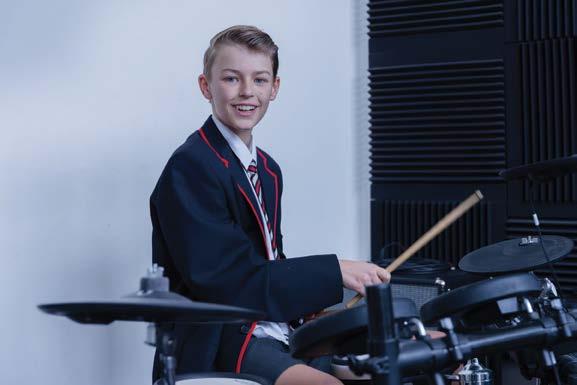



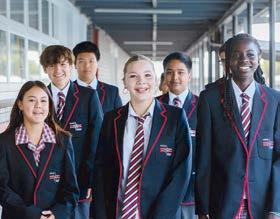
NORTH Geelong Secondary College is a single campus Year 7 to 12 academic college.
It is a creative, caring, and diverse college where young people grow into autonomous learners by engaging with our imaginative and intellectually rigorous programs.
The community is a friendly and supportive environment, underpinned by the values of respect, excellence, achievement, and diversity.
The school places high expectations on student behaviour and academic endeavour, as evidenced by outstanding VCE results and VCAL outcomes.
The team is very proud and extremely pleased with its results in 2023:
■ VCE Allstudy mean score 29 - an outstanding achievement;
■ 40-plus scores – 4.2 percent;
■ 100 percent VCE satisfactory completion;
■ The dux of the year Haisong Qi achieved 99.7 ATAR score;
■ 10 percent of students achieved ATAR scores 90 to 100;
■ 22 percent of students achieved ATAR scores 80 to 89;
■ 13 percent of students achieved ATAR scores 70 to 79; and
■ 16 percent of students achieved ATAR scores 60 to 69.
■ North Geelong Secondary College students are privileged to enjoy:
■ Learning areas equipped with the latest ICT facilities;
■ An extensive, well-resourced library;
■ Plentiful, state of the art sporting facilities; and
A creative art and technology complex which caters for food technology, studio art, ceramics, woodwork, and performing arts.
Students are encouraged to engage in a myriad of extracurricular activities, including human powered vehicle,

debating, student representative council, and lunchtime clubs, such as chess club, cultural appreciation club, dungeons and dragons, and Japanese club.
NGSC is proud to offer a number of excellence programs:
■ Scholarship program;
■ Select entry accelerated learning (SEAL) program;
■ Advancement via individual determination (AVID);
■ Strive to achieve results (STAR);
■ Achieving core education (ACE) programs; and
■ Excellence in sport program.
The scholarship program promotes and recognises outstanding commitment by school students who have displayed a strong involvement in their school community.
Scholarships are available in the following areas: academic excellence, student leadership, community, sporting


excellence, and the arts.
SEAL provides a focused educational environment for academically oriented students. SEAL classes incorporate a fast-paced curriculum, with less repetition than mainstream classes.
AVID, the only program of its kind in Geelong, underpins the SEAL program and prepares students with the skills to succeed in senior and post-secondary education.
STAR is an innovative literacy and numeracy program unique to the college.
It identifies students who have the potential to become future ‘stars’ and achieve outstanding results in Years 7 to 9.
ACE aims to improve the numeracy and literacy development of students who are performing below the expected level.
EIS develops students’ sport-specific skills, knowledge, and practical application in their chosen sports of


Australian rules, soccer, or volleyball.
The transition from primary to secondary school is seamless for Year 7 students.
In Grade 6, all students are invited to the college early in the year for a ‘taste’ of secondary school and then later in the year there is a specialised two-day program that allows students to develop new friendships and familiarise themselves with their new surroundings.
Students start the secondary school year with confidence.
Parents and guardians are invited to discover a dynamic, high-quality government school for their child.
Visit North Geelong Secondary College at a time convenient to you and see the school in operation.
To find out more and to book a personalised tour of North Geelong Secondary College, call 5240 5800 or email north.geelong.sc@education.vic. gov.au.














FOR more than 26 years, One World For Children (OWFC) has been a cornerstone in the Geelong community, providing exceptional childcare and kindergarten services.
Beyond its commitment to childcare, OWFC is also an industry-based registered training organisation (RTO), specialising in delivering competencybased training programs within the community services industry.
This dual role as a childcare provider and an RTO underscores its dedication to empowering children and adults alike, shaping a brighter future for the community.
Childcare excellence: A foundation for growth
The OWFC team believes that childcare is more than just supervision; it’s about fostering an environment where children can thrive.
The OWFC philosophy revolves around the idea that play is the cornerstone of learning. Through play, children develop essential skills such as creativity, problem-solving, and socialisation.
OWFC’s mixed-age model, known as family grouping, allows children to interact with peers of different ages, promoting cooperation and empathy.
This model not only benefits children’s social and emotional development but also enhances their academic abilities.
OWFC’s commitment to excellence is evident in its approach to early childhood education.
It offers government-funded kindergarten programs for three-yearolds and four-year-olds, designed to prepare children for the transition to school.
Led by qualified teachers, these programs emphasise play-based learning, ensuring that children develop a love for learning from an early age.
We are wowed by the beautiful outdoor environment; natural and lots of exploring for Nate!” - Andrew
Empowering adults:
Training for a purposeful career
As an RTO, OWFC is committed to providing high-quality training programs for individuals looking to pursue a career in the community services industry.
Its courses, such as the Certificate III in Early Childhood Education and Care and the Diploma of Early Childhood Education and Care, are designed to equip students with the knowledge and skills needed to excel in their careers.
The training programs are not just about acquiring qualifications; they are about preparing individuals to make a meaningful difference in the lives of others.
Through OWFC’s programs, students learn about child development, behavior management, and curriculum planning, among other essential topics.
OWFC’s goal is to empower students to become confident and competent professionals, ready to make a positive impact in the community.
A sustainable future:
Caring for the environment
OWFC recognises the importance of sustainability and environmental responsibility.
Its outdoor environments are designed to encourage children to connect with nature and develop a sense of respect for the environment.
OWFC minimises the use of plastic equipment and resources, opting
instead for natural materials that are both environmentally friendly and stimulating for children’s development.
Its ‘loose parts yard’ for school-aged children provides a space for complex play, promoting leisure and relaxation.
Children are actively involved in maintaining the outdoor environment, learning valuable skills such as watering the garden and sweeping paths.
A place to grow and thrive
The One World For Children believes that every child’s journey deserves a higher level of care and commitment.
Qualified educators are dedicated to nurturing young minds to flourish socially and emotionally in their own way.
Whether it’s through OWFC’s childcare services or its nationally recognised training programs, the organisation is committed to providing a nurturing and inspiring environment for children to learn and grow.
OWFC welcomes feedback from parents to help each individual child grow and flourish to their full potential.
With regular updates on our StoryPark App, parents can see firsthand the growth and development of their children as well as the special moments and bonds they are making.
Join us on the journey
One World for Children is dedicated to nurturing children and empowering adults to reach their full potential.
Whether you are looking for highquality childcare services or seeking to embark on a fulfilling career in the community services industry, OWFC invites you to join it on this journey. Contact childcare@owfc.com.au or 1800 006 533 to learn more about its programs and services.

GEELONG Baptist College (GBC) is a unique independent college with an open enrolment policy.
Families are invited to meet the principals and tour the grounds yearround.
Enrolments for the 2025 academic year are well underway and the school invites students to join a vibrant community that is committed to academic excellence, personal development, and spiritual growth.
GBC offers classes from Foundation to Year 12.
Established in 2002, GBC is a young and vibrant school, located in a lovely semi-rural setting, only 10 kilometres from the centre of Geelong.
The school has six college buses, which service most of Geelong and surrounding areas like Point Cook.
The school is established on Christian values and consists of a small, close-knit community where parents, students, and teachers work together, assisting students to pursue academic excellence.
GBC’s dedicated team of educators are passionate about inspiring a love for learning and equipping students with the knowledge, skills, and values they need to thrive in an ever-changing world.
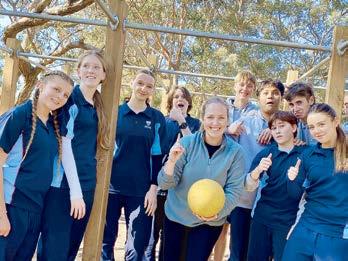
With small class sizes and personalised attention, they create an atmosphere where students feel valued, supported, and challenged to reach their full potential.
From the classroom to the sports field, from the stage to community service
projects, students are encouraged to pursue their interests, challenge themselves, and make a positive impact in the world around them.
GBC also offers a semester-long program which caters to the needs of Year 9 students in developing their whole person.



In the first term, the focus of the program is to ‘unpack’ who they are as individuals discussing topics such as trust, personality types, resilience and growth mindset, team building, healthy relationships, values, purpose and destiny, self-esteem, goal setting, and physical challenges.
In the second term, the program focuses on ‘making a difference’ where students are challenged to make a difference in their local community.
The topics covered during this experience are community, creative thinking, being an entrepreneur and the ‘docs and teens’ program.
Students attend camps, and partake in entrepreneurial projects along with a myriad of physical activities.
Whether you’re entering primary school, transitioning to secondary education, or seeking a supportive environment for your senior years, Geelong Baptist College offers a range of programs tailored to meet the needs of students at every stage of their educational journey.
GBC invites families to discover the difference a Geelong Baptist College education can make in the lives of their children.




NEXT year’s Preps will get a head start on their literacy thanks to a library bag full of fun and engaging story books.
Premier Jacinta Allan and Education Minister Ben Carroll revealed the titles of next year’s books in July, which will help about 65,000 students improve their reading skills at home.
Literacy experts, including a Children’s Book Council of Australia judge, Prep teachers and a librarian, selected:
A Crocodile in the Family, written by Kitty Black and illustrated by Daron Parton;
Walk of the Whales, written and illustrated by Nick Bland;
Bernie Thinks in Boxes, written by Jess Horn and illustrated by Zoe Bennett; Koala Ark, written and illustrated by Stephen Michael King; and No Way Yirrikipayi! by children from Milikapiti School, Melville Island, with Alison Lester.
“Our family loves reading together – and when the kids were younger, books like The Magic Beach and The Very Hungry Caterpillar were on high rotation,” Ms Allan said.
“With a Prep Bag full of books, we’re helping families find some new favourites and encouraging more young Victorians to discover a love of reading.”
The books will also be produced in Braille with tactile illustrations by the Statewide Vision Resource Centre, supporting students who are blind or have low vision.
Research has shown how important it is for parents and carers to regularly read aloud to young children, particularly as they prepare to move from kinder to primary school.
By reading together, families can help kids to expand their vocabulary, make connections between spoken and written words, and strengthen the bond they share with their children.
“This initiative will help parents and carers support their child’s reading skills from the very start of their school journey,” Mr Carroll said.
This initiative has been supporting children’s literacy since 2019 and ensures Prep students and their families have access to great age-appropriate books. It has delivered more than 1.9 million books so far.

EVIDENCE-BASED teaching and learning will be embedded in Victorian classrooms, including best practice teaching of phonics in the early years.
Education Minister Ben Carroll in June announced the updated Victorian Teaching and Learning Model, to be implemented in all government schools across the state from 2025 with explicit teaching at its core.
All students from Prep to Grade 2 will be taught using a systematic synthetic phonics approach as part of their reading programs, with a minimum of 25 minutes daily explicit teaching of phonics and phonemic awareness.
This will be a core component of a comprehensive reading program that also includes explicit teaching of oral language, vocabulary, reading fluency, and comprehension.
Systematic synthetic phonics is a structured approach that explicitly teaches the relationship between sounds and letters to read words.
Schools and teachers will receive high-quality, practical lesson plans, first in English and mathematics and then in science and design and digital technologies.
“The reforms and the rollout of the lesson plans will reduce teacher workload and equip them with high quality, best practice materials so they can spend more time with their students and less time planning,” Mr Carroll said.
Evidence from Victorian schools and from reviews conducted by research organisations like the Australian Education Research Organisation and the Grattan Institute shows explicit teaching works best for the largest number of students, particularly those who might be struggling.
Studies from the United States, United Kingdom, and across Australia now recommend systematic synthetic phonics as the most effective method to teach children to read.

By Casey Neill
MATERNITY leave gave Lauren Munday the career pause she needed to pivot and find her passion.
The Mordialloc mum of two, teacher, and author helps students to adjust their mindset through her program Think Set Go.
“It’s about understanding how we think and the way that we hold ourselves back sometimes because of our past stories,” she said.
“When we have a goal we need to see it as a fresh thing that we can achieve.”
Lauren aims to help students cope under pressure, presenting them with tools in a fun way.
Both of Lauren’s parents were teachers and she loved sport, so she was drawn to PE teaching - the first piece of the Think Set Go puzzle.
The second was discovering the power of her mind while playing AFL. She took up the game at age 28.
Lauren listened to podcasts, read books, and sought out information to help her get her head in the game and keep it there.
“I was shocked at how the mindset stuff just skyrocketed me,” she said.
Within two years she was playing in the VFLW and became the Carlton side’s vice-captain.
“Then I got injured and reassessed it all,” she said.
“When I was in a good headspace I was excelling. When I was in a negative headspace that’s all I could focus on - all the negatives.
“When I stepped away I thought ‘I don’t want that to happen to anyone else’.”
The Think Set Go picture was coming together. Then Lauren fell pregnant.
“I found maternity leave to be the thing I needed,” she said.
“It’s a forced break from work. Sometimes that’s what you need to reassess.
“I didn’t know how else my days could go.
“I was just so used to going in and teaching in a school.
“If I only focused on going back to work, I would have just gone back to work.”
Instead, Lauren wondered what else she could do.
“It was conscious. I chose,” she said.
“There was this gap in my life.
“This was a crossroads - where do I want to be in 10 to 15 years?”
People ask her how she juggled a career change and motherhood.
“You prioritise when you want to do something,” she said.
“I always made sure I had a list of things I wanted to get done for the Think Set Go, so when I did get a break when I had the baby, it was just there.
“We underestimate what we’re capable of.
“I’m getting the groundwork done while I can’t go all out.
“People think it’s all or nothing. Ease into it.
“Motherhood’s made me do what needs to be done and not dwell on things that aren’t important because there’s no time for that.”
Lauren practices what she preaches. When she feels overwhelmed or stuck or lacks motivation, she asks ‘do I need to think, set or go?’.
Think refers to asking questions like ‘Do I need to regain focus or shift my perspective? What do I want to achieve? What’s holding me back? How can I adapt my mind to support me?’
“I remind myself of what my values and priorities are. I remember what the aim is,” Lauren said.
For set, Lauren asks: ‘Do I need to set myself up better? Do I need to plan or prepare in a different way so that I can stick to this plan and commit? Do I need to adapt a routine or change something to make it easier for me to persist?’
Then it’s go time: ‘Do I need to figure out how to simply do what needs to be done in the moment? How can I take action when I don’t want to? How can I adapt the way I am thinking right now to commit to the plan?’
“I can practise all this stuff when I do my CRT,” she said.
“I go to different schools on purpose.
“It’s like market research.
“I’m becoming better at dealing with different situations and different kids.”
Lauren wrote up workshops in a succinct one-page format, not knowing how valuable his exercise would be.
She had trouble getting hold of a book so reached out to the publisher for a copy.
Soon she was chatting about writing a mindset book. Her workshop summaries formed a makeshift manuscript.
Mindset Handbook: Mastering Your Mind for Success was published in May.
It’s aimed at secondary school students, “but an adult could pick it up as well and learn a lot”.
“What I’m seeing in schools is the way parents are has rubbed off on their kids,” she said.
“If parents can learn to change their mindset, that will filter down.
“Awareness is the first step: we’re thinking that way and we don’t have to.
“We don’t really feel like we’re in control of it.
“We don’t even think ‘Am I thinking in a way that’s helping me here?’.
“We find it easier to go through with ‘This is how I feel so this is how the day will be’.
“You can change that at any time.
“When we have a thought for the first time, neurons talk in our brains.
“The more we think it, the stronger the pathway becomes.
“Then it becomes a priority thought.
“If it’s a negative one we think about often, it’ll be prioritised.
“The only way to change that is to consciously put the positive one in its place.
“Shift the way you naturally think.”

By Casey Neill
SAM
McMillan
never thought a poem to celebrate his daughter’s first birthday would land him millions of views and a book deal.
The Sunrise weather man, better known as Sam Mac, shared the “love letter” to Margot in a video on Instagram.
“I needed her to know the magic she’d brought to our lives. Even if it would be a few years before she could fully understand it,” he wrote.
Much to his surprise, the video - born from musings on the back of an Uber Eats bag - took on a life of its own and has since been viewed more than 1.5 million times.
“I think it resonated because the unparalleled joy of new life fascinates us all,” he told Kids.
“It’s a wild ride, with the highest of highs and lowest of lows, but it’s so incredibly precious – a gift.
“My words and video connected with millions of people all over the world and it’s something I’m extremely proud of.
“I had countless messages from new parents thanking me for articulating what they were feeling.
“Milestones like first steps or first words are so universal, they transcend nationality or socio-economic status, and therein lies the beauty and power.
“They deserve to be celebrated and remembered.”
When Penguin approached him about turning his poem into a book, Sam felt excited and grateful.
“I keep envisioning reading the book with Margot for many, many years to come and showing her what her arrival meant to her mum and I,” he said.
“I love that the book will open up connection and conversations for so many other parents to do the same with their little ones.
“But not just parents - grandparents, uncles, aunties, friends and more.”
He hopes readers take his words as a gentle reminder of how precious life is, and how much of a privilege it is to have a newborn baby in your orbit.

“And I hope that it opens up conversations and leads to beautiful moments of nostalgia between families,” he said.
Becoming a parent “instantly” changed the way Sam saw his life.
“Everything I do, every decision I make, now has to be the right one for Margot (and Bec), both consciously and subconsciously,” he said.
“It’s a purpose like no other and it’s crystal clear. I love it.”
It also changed the way he saw his partner.
“I saw how strong Bec really was, and is, throughout the pregnancy and particularly in that birthing suite,” he said.
“The pain she went through to safely welcome our baby girl is something I’m forever grateful for.
“A warrior.
“Further to that, I’ve watched her transform into the most caring, reliable, fun mother.
“Bec is still all of the things I fell in love with when we started dating, but I now see a completely different version of her as a mother, and it’s even better than anything I could’ve ever imagined.
“Except when she leaves her hair all over the bathroom. I hate that.”
Sam also has a newfound appreciation for his parents.
“I think as children, we just take our parents for granted,” he said.
“We don’t really consider how hard it might be for them to juggle work, a partner, finances, kids etc.
“Becoming a parent myself has been a wonderful reminder to do more for my parents.
“Spoil them. Make sure they know how loved and appreciated they are.
“I find myself learning more about them through conversations about what parenting was like for them and one of my great joys is seeing Margot laughing and playing with Nanny and Grandad. The best!”
How about those parenting moments that aren’t quite so joyful?
“In the challenging moments (and of course, there’s many), I try my absolute best to stop for a quick moment, take a breath, and remind myself not to apply adult logic to the struggles of a one-yearold,” he said.
“I know I need to get Margot home from the park because it’s time to start dinner.
“But in her mind, I’m prematurely ending the best part of her day, playing at the park.
“Her meltdown is not happening to make my life difficult … it’s happening because playing at the park is making her incredibly happy – as it should be for a one-year-old.
“Just briefly pausing and trying to view things through that lens really helps me understand why she might be behaving in that manner.

“I’m certainly no parenting expert, and I fail multiple times daily, but I find this approach very useful.”
Margot took 21 flights during her first 12 months, following her dad to work around Australia and overseas.

“I’m so lucky to have the support of Seven. They’ve gone above and beyond to enable me to continue in this role AND be a present parent,” he said.
“My advice to others would be if you don’t ask, you don’t receive.
“You need to speak up.
“If your child has a sporting carnival you desperately want to be at, have the conversation with them.
“Pitch your solution on how you can shuffle your work schedule.
“It’s more than likely your boss is juggling work/life balance with their own kids, and you might be surprised how accommodating they are.
“If that fails, use some of your leave.
“The special moments with our little ones should unashamedly be our priority.”
Most parents feel blindsided by the realities of parenthood, but there’s nothing Sam wishes he knew beforehand.
“I feel like it happened exactly the way it was supposed to, and if I knew too much going into it, it may not have been quite as magical,” he said.
Baby number two is now on the way. What will he do differently the second time around?
“Everything!” he said.
“Because it’ll be a totally different person and from all reports, everything we thought we mastered with Margot is now out the window.
“Please send help.”
Suddenly One is available from 17 September.

By Casey Neill
MOVING house is a daunting prospect at the best of times, but throw kids in the mix and you’re in nightmare territory.
So how do you know it’s worth taking the plunge? And how do you smooth the transition for yourself and your children?
Berwick mum Jacqui James recently moved to the suburbs from the Dandenongs with husband Graham and daughters Matilda, 5, and Georgia, 3.
She grew up in the hills and while she loved the natural surrounds, she found winter cold and dark and seeing friends was difficult.
“I never imagined I would have a family in the hills,” she said.
“I always thought I wanted something different for my kids.
“Then I met Graham and he’d never been to the Dandenong Ranges.
“He came up to meet my family and he fell in love with it.
“I love the outdoors and I love nature, and when you’re away from it you forget all the negatives.”
Cut to Jacqui and Graham living in a unit in Ashwood, expecting their first child and unable to afford a bigger place in the area.
“In the hills we could get a proper house, and we’d been cramped in this two-bedroom unit for three years, so we wanted more space,” she said.
“I never intended to stay there forever.
“It was a truth that I had deep down.
“I was hoping that everything would work out and that maybe things would be different.”
But the negatives that saw her move off the mountain as a teen came back into focus: no footpaths, few friends for her girls, wild weather, and a neverending home maintenance list.
“I moved when I was the same age as Matilda.
“I told them that story, how it became my new normal and I hardly remembered my old house.
“We spoke to them about it the whole way along, so it wasn’t suddenly ‘we’re going to move house’.
“The final straw was when a tree fell on our neighbour,” she said.
“We’d had a number of close calls with trees over the years.
“After that I was too nervous to go for a walk.
“Matilda’s asthma was another reason we decided to move.
“The cold air really sets it off.
“She was having a really indoor lifestyle for four months of the year.”
So Jacqui and Graham made a list of what they wanted from their new home and weighed up their options.
“Our number one value was family, which is probably most people’s, and Berwick was going to put us halfway between my parents and Graham’s parents,” she said.

“We asked them what they thought. We brought them along for the ride. They came to all the house inspections.
“We came down to playgrounds and cafes, so they could see what it would be like.”
Step one of the physical moving process was to declutter.
“When you’re selling a house, too, you have to make it look like things are in order,” Jacqui laughed.
They used Facebook Marketplace, a storage locker and op shops, and gifted items to friends.
“A long settlement was good because we had time to do it slowly rather than all in a rush,” she said.
Using removalists was “a lifesaver” with two kids underfoot.
“It put him closer to work so he could be home with us more, and it had really good schools.”
They toured childcare centres, kinders and schools with Matilda and Georgia in tow.
“Where they felt most comfortable helped me make my decision,” Jacqui said.
“Letting them be a part of it helped.
“We couldn’t have done it without them,” she said.
The family had been in Berwick for six weeks when we spoke.
“We haven’t met that many people yet, but through kinder Matilda got invited to a birthday party,” Jacqui said.
They’d introduced themselves to neighbours and in the depths of winter, found themselves outdoors much more.
“People are very friendly,” she said.
“It’s also been a lifestyle change for us. We’re doing more.”
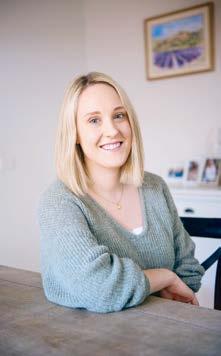
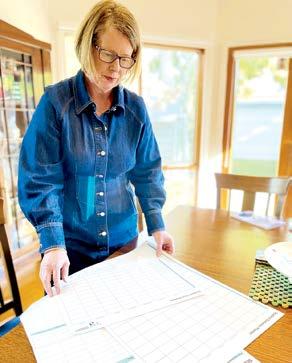

By Casey Neill
Moonee
A
Ponds mum is on a mission to teach kids to manage their time and tasks.
Amanda Lecaude is an academic life and executive function coach. Put simply, she’s an organisation and time management whizz who gives others the tools to tame their sloppy ways.
She started a business offering general organising in homes and businesses, but 10 years ago pivoted to helping students from Year 6 to university and hasn’t looked back.
Her top tools for parents who want their children to be more organised?
Analogue clocks.
“In order to manage time, you’ve got to see time passing,” she said.
“If you can’t see time passing you’ve got no awareness.
“You have to see that time has a beginning and a middle and an end to manage it.”
Amanda also recommended family planners and said timers had an important part to play, especially around device use.
“I put a timer in place for my children so they could see that time passing,” she said.
Her sons, now aged 18 and 21, exposed her to bullying, school refusal, and alternative learning pathways.
“My experiences help me to help others,” she said.
“I don’t want to have to have gone through them, but it’s been really useful.”
Amanda has just released her book Life Skills Handbook: Conquering Time Management and Organisation.
It’s aimed at secondary school students but the concepts are applicable across all age groups.
Parents can start helping their children to better manage their time from any age.
“One of the things I also talk a lot about is executive functions,” Amanda said.
“We all have executive functions. We’re not born with them. They develop.
“They’re things that control our planning, our prioritisation, our memory, our time management.
“That part of the brain doesn’t finish forming until the age of 25.
“That doesn’t mean you can’t learn and teach these things along the way.
“It’s trying to educate this younger generation coming up so we can move away from some of the negativity we grew up with - that you were just dumb or just lazy.
“Kids don’t set out to not do well, they don’t set out to fail.
“They don’t set out to be difficult.
“They might not have the right tools or know what it is they need to do.”
So how can parents equip their children with the right tools?
“One of the things we do is we’re
always very busy issuing directions,” Amanda said.
“All the kids are learning is to take directions.
“One of the things I say to parents is to take a step back and change the way you approach it.
“Ask ‘where do we need to be, what time do we need to be there, what do you need to have with you?’.
“This sets a really solid foundation.”
Amanda has identified 15 steps between a teacher issuing homework to a child handing it in.
“For most kids, you get it, you do it, you hand it in. You don’t even think about it,” she said.
“But kids can get stuck in any one of the 15 steps.
“I have kids that will do the homework but not hand it in.
“We need to identify where they struggle so we can provide the tools and strategies to manage it.”
Amanda and her team assess each child they assist and adapt their program to their needs.
“We look at everything from desk setup to eating habits, sleeping habits,” she said.
“What we’re trying to do is make a difference to these kids’ lives.
“You’ll hear parents and teachers say they’re just lazy.
“They’re generally not lazy, it’s just that they don’t have the right tools or
strategies to do what it is they need to do.”
Parents often don’t know how to help because they never learned the necessary skills.
“I don’t think we teach this stuff well enough in schools,” she said.
“We have career people in high schools. I think there should be someone who does what I do, to support students.
“We’re seeing a lot more anxiety, stress, mental health issues, and overwhelm.
“If they can break it down and make things more manageable and easier, it makes a massive difference on that front.
“What I’m seeing more of is perfectionism.
“That is really impacting kids’ ability to function.
“If a child does their best, you can’t ask for more.”
Amanda said the transition from Year 6 to Year 7 was the most pivotal to support kids through.
“Not only is there so much change but kids are going through puberty at the same time so there’s a lot going on,” she said.
“My advice to parents at that stage is just let your kids be engaged and happy and want to go to school.
“Don’t worry about the academics, that will come later.”
Visit www.organisingstudents.com.au for more information.
By Casey Neill
TWO busy mums have cooked up an easy and nutrition-packed guide to feeding not only your baby but your whole family.
Nutritionist Julia Tellidis and baby nutrition consultant Lauren Skora designed Baby Food Bible for modern, time-poor parents.
“We’ve streamlined the information to make it easy to digest,” the duo said.
“Our mission is to turn what can be daunting into a fun experience, offering parents clear, reliable guidance from the get-go.
“Our philosophy of ‘food is medicine’ is considered in every recipe.”
Lauren studied baby nutrition when the time came to start daughter Frankie on solids, while clinical nutritionist Jules found her knowledge bank overwhelming when introducing food to her son, George.
“We had countless conversations about the conflicting advice around starting solids and did lots of research between us, determined to get it right from the beginning,” they said.
“We quickly realised we were not alone and that lots of other parents also found the journey tricky.
“Together we developed our own recipes, which were not only balanced and nutrient-dense, but also designed to please even the pickiest of eaters, as well as cater to the whole family.”
They started sharing their recipes online and the response was overwhelming.
“We had found our purpose,” they said.
Baby Food Bible covers how to introduce solids, food safety tips, allergen advice, and recipes for breakfast, lunch, dinner, snacks, sweet treats, and condiments.
“Advice we often come across is that your baby needs to start solids at four months old,” they told Kids.
“Four months is really premature to start solids.
“When babies are ready for solids, they will show readiness signs like sitting up well with minimal support, good head, and neck control, and they should start showing an interest in food, usually closer to six months.”
As for starting the feeding journey with rice cereal…
“It’s certainly not our approach,” Lauren and Jules said.
“Rice cereal is commonly recommended as a first food as it’s fortified with iron, but synthetic iron is not absorbed in the body the way naturally occurring iron is.
“Secondly, rice cereal is really bland. We don’t want our babies’ first foods to be bland.

“We want to set them up to become adventurous eaters from the get-go.
“We have a small pocket of time from when they’re about six to nine months of age to offer a variety of flavours and textures to positively influence longterm eating habits.
“The first five years of a child’s life are absolutely crucial.
“We want to ensure we’re offering foods rich in the nutrients their growing bodies need.
“Good nutrition supports rapid brain development, helps establish a healthy gut and immune system, and, importantly, sets the stage for lifelong healthy eating habits and behaviours.”
This focus on nutrition can have a positive flow-on effect on the whole family.
“It’s like laying a solid foundation for everyone,” they said.
“Whether you’re feeding your baby or yourself, understanding the nutrients our bodies need, crafting balanced meals, and understanding the importance of food quality is key.
“Many parents prioritise their children’s nutrition and sometimes forget to take care of themselves - it’s understandable!
“Yet, being a role model for healthy eating habits sets the tone for the whole family.”
SEARCHING for inspiration for your child’s next birthday cake?
Look no further!
Aussie cake artist Tegan MacCormack, better known as Tigga Mac, is serving up 30 achievable, affordable, and amazinglooking cake hacks in a new book.
The internet sensation covers mermaids, sandcastles, ice cream trucks and so much more in Tigga Mac’s Cake Hacks.
The book has six themed chapters: whimsical and wonderful; farmyard friends; tracks, wheels and automobiles; slimy scales, teeth and tails; creepy, kooky and all things spooky; and fair dinkum aussie.
No baking skills or big budge are needed.
You can make these creations with affordable shop-bought sponge cakes or homemade ones. Follow Tigga’s step-bystep decorating instructions from start to finish, all accompanied by clear photography and a full-page shot of the finished cake to guide you.
The hacks are graded, so you can choose one that suits your skills, time and ambition.
For the more challenging cakes, QR codes will lead you to follow-along video tutorials to help you on your path to birthday cake glory.
Tigga is known for her joyful energy, easy-going vibe, down-to-earth creativity, and catch phrase ‘okie dokie’.
She wrote Tigga Mac’s Cake Hacks with longtime friend and business partner, Katie Scoble.
The pair began their cake decorating journey in their tiny kitchen more than seven years ago.
Katie could bake. Tigga could decorate. Combining these two ingredients allowed them to turn their dream of starting their own business into a reality.
Tigga designed this book with parents and caregivers in mind to make creating a celebration cake straightforward, foolproof and fun.


By Casey Neill
THE timing of Caz Goodwin’s tenth book was beautifully serendipitous.
The award-winning Hawthorn author had just penned A Wish for Baby when her son, Tom, revealed Caz was about to become a grandmother.
“It’s like a love letter to a baby,” she said.
“I didn’t write this with a particular baby in mind.
“I channelled my memories of my own children and how when they were born, I’d just stare down and look at them and imagine ‘what are the adventures you’re going to have?’ and ‘I hope you have wonderful friends that support you’ and ‘I hope you enjoy nature’ and ‘I hope you are healthy’ and ‘I hope you’re happy’ - all those natural feelings that come when you’re a new parent.
“All those feelings are coming up again as a grandmother.”
The illustrations by Sara Acton show a child and their father having fun with dress-ups, baking, reading, and giggling with friends.
Tom was thrilled with the book’s timing.
“I remember when I first showed him the manuscript,” Caz said.
“He might have wiped away a tear.
“As a parent there’s nothing quite like your first baby.
“The joy that this little baby has brought has been wonderful.”
Tom confirmed he was very emotional when he first read the book. Little Isla was four weeks old when we met. He felt like Caz was writing to her before even knowing she existed.
“It was very special,” he said.
He was eagerly awaiting a copy, fresh from the printer, so he could read it to Isla.
“We read to her every night,” he said.
“It will be really special when she knows it’s written by Caz Ma.”
Caz started her writing career when her husband’s job took the family to Singapore.
“I was told I wouldn’t be able to work there. I thought I’d do what I’d always wanted to - writing books,” she said.
“I set a goal of writing one within the first year.
“I’d always written and I loved rhyming books in particular.
“I was brought up on AA Milne and Dr Seuss.
“When I was a bit older I loved Jane Eyre’s rhyming poems.
“I would write rhyming invitations to family but never really thought about going about it more seriously and having it published.”
She joined a writer’s group, put pen to paper, and her first book was published soon after.
“That was a book called Dragon’s Egg, which is still in print in Singapore,” Caz said.
“It was a children’s picture book about
a child who finds an egg and a dragon hatches out.
“It won a competition so that was a good way to get into the industry.
“When I came back to Melbourne I kept writing and haven’t stopped.”
Caz’s books generally start with a character, and then she asks questions about them.
“I’m not a plotter; I just start writing and the story seems to evolve organically,” she said.
“I don’t set out with a particular theme in mind or a particular moral I want to tell.
“What if it was a little girl and she was best friend’s with the old man next door, and what if their favourite goat died?
“And what if he was depressed and didn’t want to come out of the house and she had to help him out?
“That’s how my last book developed.
“I do a lot of re-writing, which most writers do.
“I keep exploring until I find a way to make a story work and the characters work.
“The narrative arc has to be appropriate and the conclusion has to have some hope.”
Caz is also a literacy advocate. She runs the Society of Children’s Book Writers and Illustrators (SCBWI) in Victoria and is on the Young Australian Best Book Awards (YABBA) council.
“I really encourage all parents and grandparents to start reading from the
moment they’re born,” she said.
“The research shows that reading to babies is really important and that you can’t start too early.
“There’s nothing you can do to really give your child the best educational outcome before they start formal school other than reading.
“It’s just vitamins for the brain.
“It’s so good for them in so many ways.
“It also helps you feel closer to them when you’re reading to a baby.
“There was some research done that showed reading to babies in utero, their heart rate slowed reading one story versus another story.
“I thought that was some really amazing research.”
Caz recommended rhyming books in particular.
“The children relate to them and do really engage,” she said.
“As they get older they can anticipate the words because they rhyme with the line before.
“There’s something about the rhythm that is calming and almost meditative.”
A Wish for Baby fits the bill.
“This is the sort of book that I think would be a lovely gift to give to a newborn or the parents of a newborn,” Caz said.
“It really contains those universal feelings of joy but also wonder and hope and the dreams for a new little one.”
By Casey Neill
AN Aussie mum is encouraging kids to see ADHD as a superpower rather than a hindrance, following her own diagnosis with the disorder.
Elly Both uses A Kids Book about ADHD! to celebrate the unique skills that come with attention-deficit/ hyperactivity disorder.
Growing up, Elly often thought there was something wrong with her.
“I was diagnosed with ADHD a few years ago now at the ripe old age of 44,” she told Kids.
“I started to look back at my childhood and how I would have loved to have a handbook of how my mind worked at that time.”
It was only once she received her diagnosis that her ‘character flaws’ became symptoms and her world started to make sense.
“I was a pretty anxious kid,” Elly said.
“I spent a lot of my time daydreaming.”
Her school reports said she was smart but could do a little less talking, stop bothering her classmates, and be a little more conscientious.
“So I just wanted to make kids feel OK,” she said.
“They’ve got this brain, it’s not always easy to cope with.
“Even as an adult I’m still dealing with the challenges of ADHD every day.”
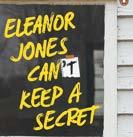
Amy Doak
Things have settled down in Cooinda and Eleanor Jones is getting used to her new normal – spending time with her friends, going to school, and working on a project at the local old age home.
But just as things start to feel calm, a series of events once again rock Eleanor’s world: Troy’s ex-girlfriend is back in town and, during a visit to the old age home, Eleanor’s buddy Nance admits to witnessing a murder, swearing Eleanor to secrecy. Eleanor throws herself into solving the mystery of the murder with help from new friend, genealogy expert Jem, and finds digging into old secrets can be incredibly dangerous.
Penguin
$19.99
Elly said it could knock your self esteem and confidence.
“There are challenges, I’m never going to sugarcoat it,” she said.
“But how do we discover what our superpower is, and how do we harness it?”
ADHD comes with an immense sense of energy, creativity, and a hyperfocus state, she explained.
“I think that’s how I do a lot of my written work,” she said.
“How do we foster that in our kids or help them harness that?
“I’ve had so many parents message me in tears saying they saw themselves on the pages or that it helped them understand their own kid.
“It’s designed to be co-read with a grownup.
“I’ve also included in the book a number of questions that I think adults can speak to their kids about as well.”
Elly said the book could help kids to better understand and empathise with their peers.
“Everyone has a unique brain, we are all unique,” she said.
“We can’t understand unless we talk to people about those differences.”
Elly’s book is part of the A Kids Co series ‘A Kids Book About…’.
“I’ve always wanted to write something. I had this inspiration one day to ask them ‘can I write a book in your series?’,” she said.

Jess McGeachin
The Space Between celebrates those special friendships that last, no matter what. Max and Milo do everything together, every day, and in their rocket ship, even the stars and planets don’t seem too far to reach.
But when Milo has to move away, the space between them seems too great, and Max must find another way to navigate the galaxy.
Penguin
$24.99

She’s a sustainability consultant by trade.
“A lot of what I do is the written side of things, so the communications side,” she said.
“It’s my happy place.”
Elly has other children’s books in the pipeline.
“I’ve got a few on the go. I’m not sure which one will eventuate,” she said.
Find A Kids Book about ADHD! on Amazon or at ellyboth.com.

Idan Ben-Barak and Zahra Zainal
This is me. My body can see, hear, smell, taste, and touch. But it also knows if it is hot or cold, if I am sideways or upside down.
Explore the human (and other) senses!
Scholastic $19.99
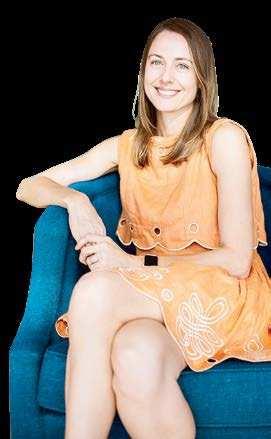

Margaret O’Hair and Sofia Sanchez
Nobody is born brave. There is no magic wand to make you brave, either. You have to learn to be brave – just like you have to learn how to do everything else. This book helps readers learn their self-worth and encourages kids to overcome obstacles by sticking up for themselves and others, trying new things, and showing the world how brave they are!
Scholastic
$26.99

Phil Cummings
Grandpa has a world of memories he likes to share, from tadpoles to summer rain, and his mum making warm, crusty bread.
But he has trouble remembering his granddaughter, Georgie. Georgie’s efforts to trigger Grandpa’s memory of her lead them to the remembered joy of making newspaper hats. Newspaper Hats will have you thinking about how we make, record and recall memories
Scholastic
$24.99







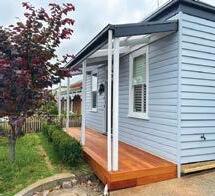







is Geelong and the Sufcoasts only specialist tennis and squash retailer.
Located at the iconic Geelong Lawn Tennis Club in Belmont, we are a full service tennis and squash shop ranging the best brands at the best prices. Our racquet range includes Yonex, Wilson, Head and Babolat whilst our tennis shoe range includes ASICS, Wilson, KSwiss and Head. We also offer a professional restringing service with experience stringing at the Australian Open and other major tennis and squash tournaments.
Surfcoast Racquets also offers a free racquet demonstration service to allow you to try before you buy, it’s free of charge and is a popular service we offer. Expert advice, great range and super competitive prices - what more could you want?? Come in and see us and #shoplocal
12-20
Ph:
